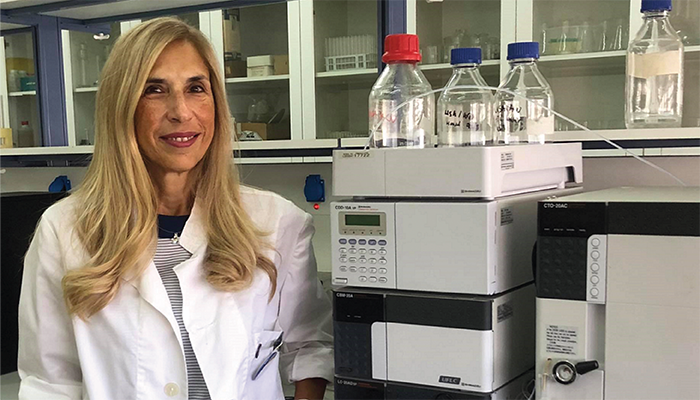A quick literature search for articles introducing new sample preparation approaches, discussing the greenness of a method, or comparing methodologies will show that authors often refer to the sample preparation step as the “bottleneck” in chemical analysis – myself included. I penned an In My View article in 2017 (1) with the subtitle question: “Is sample preparation still the bottleneck of analytical chemistry?”
Six years later, it’s time for a rethink. We must confront sample preparation from a different angle – not as an obstacle to analytical performance, but instead as a cornerstone – the solid foundation on which a good analytical method is constructed. The accuracy, precision, limits of detection and quantification, linearity, selectivity, robustness/ruggedness, stability, and applicability of any analytical method relies on good sample preparation. The reliability of the analytical results provided by any analytical laboratory is eventually based on the sample preparation used. It isn’t simply an inconvenient stepping stone – a bottleneck – before the real work is done.
Samples should be handled with respect to their qualitative and quantitative consistency in such a way that results reflect the initial composition. There are various complex and tricky matrices, including food samples (of plant or animal origin), biological fluids, (bio)pharmaceuticals, environmental samples and so on, that must be analyzed – and each category has its own special features and poses its own challenges.

All challenges regarding matrix components, interferences, variety of target analytes, legislative criteria, presence in trace levels, variety of subsequent analytical approaches can be met using the sample preparation weapons in our arsenal. We can choose from traditional and/or modern extraction and microextraction techniques, solvent based or sorbent based, ultrasound or microwave assisted, in situ or in vivo approaches, fabric phase or paper-based sorptive extraction, selective materials and nanomaterials, molecularly imprinted polymers, metal organic frameworks, new extraction solvents (ionic liquids), (natural) deep eutectic solvents, automated or hyphenated systems combining the benefits of two technologies, two dimensional analyses… The list goes on. But we’re definitely moving in the same direction – providing reliable results in a fast and simple way, while also minimizing the negative effects to the environment and ensuring user safety (2).
Modern analytical methods must take into account the need for sustainability, greenness, practicality, and speed in providing the results without – or at least minimally – compromising performance. And there are many assessment tools able to evaluate a method’s compliance with green analytical chemistry and green sample preparation demands to assist in selecting the most efficient and green(ist) approach (3–7).
I believe all analytical chemists should reconsider sample preparation and approach this crucial step from a different mindset – not as the tedious, error prone, difficult, time-consuming step, but as the cornerstone of a green and stable foundation.
My answer to the question I posed in 2017 was along the lines of: “Yes, the sample preparation step is still the bottleneck in chemical analysis, but we have many tools in our hands to make it easier and more efficient.” I concluded with a Benjamin Franklin’s quote: “By failing to prepare, we are preparing to fail.” Now, I recognize that, by failing to prepare, we are preparing for “method development” failure. And the only way not to fail? Using appropriate sample preparation in the most efficient way.
References
- VF Samanidou, “Don’t Prepare to Fail,” The Analytical Scientist (2017). Available at: https://bit.ly/44jFmQ9.
- V Alampanos and VF Samanidou, “Current trends in green sample preparation prior to liquid chromatographic bioanalysis,” Curr Opin Green Sustain Chem, 31, 100499 (2021). DOI: 10.1016/j.cogsc.2021.100499.
- F Pena-Pereira, I Lavilla, and C Bendicho, “Greening sample preparation: An overview of cutting-edge contributions,” Curr Opin Green Sustain Chem, 30, 100481 (2021). DOI: 10.1016/j.cogsc.2021.100481.
- A Gałuszka et al., “Analytical Eco-Scale for assessing the greenness of analytical procedures,” TrAC Trends Anal Chem, 37, 61–72 (2012). DOI: 10.1016/j.trac.2012.03.013.
- M Tobiszewski, “Metrics for green analytical chemistry,” Anal Methods, 8, 2993-2999 (2016). DOI: 10.1039/C6AY00478D.
- F Pena-Pereira, W Wojnowski, and M Tobiszewski, “AGREE – Analytical GREEnness Metric Approach and Software,” Anal Chem, 92, 10076–10082 (2020). DOI: 10.1021/acs.analchem.0c01887.
- J Płotka-Wasylka, “A new tool for the evaluation of the analytical procedure: Green Analytical Procedure Index,” Talanta, 181, 204-209 (2018). DOI: 10.1016/j.talanta.2018.01.013.
